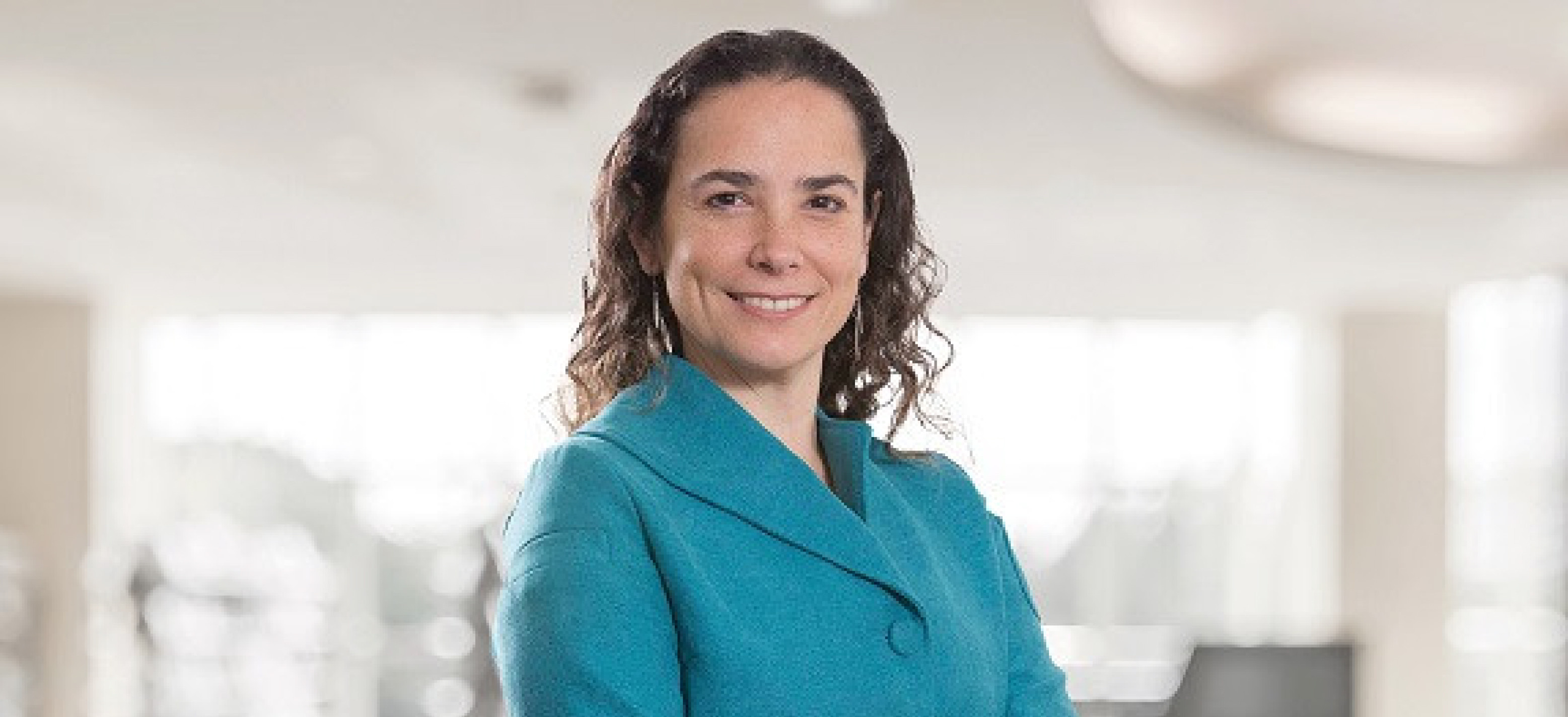Lima, FEBRUARY 3 2023Pamela Antonioli: Poderosa, Nexa and Buenaventura Invest in Innovation through Benefits of Law 30309

In an interview with the Peruvian Institute of Mining Engineers, Pamela Antonioli, general manager of the Peruvian Mining Innovation Hub, analyzes the impact of Law 30309 on mining research and development. She also talks about the potential of alternatives like Works for Taxes and public procurement for promoting technological innovation and the initiatives of the organization she leads, with the aim of accelerating the implementation of the mining of the future in Peru.
People know that mining companies invest in exploration, infrastructure, and equipment, but not how much they invest in R&D&I projects. Do you have these figures, or can you tell us, in general, what percentage of its expenses does a company allocate for these projects?
As part of an organization made up of mining companies, major suppliers and institutions that are allies to the innovation ecosystem, we know that each mining company has their own way of deciding how much they invest in R&D&I projects. Some have a budget for innovation projects through an area specifically created for this purpose, while others do it through the budget of each area. What we can assure you, from the Peruvian Mining Innovation Hub, is that the companies are adapting their processes in order to facilitate innovation, in response to the multiple challenges facing the mining sector.
Furthermore, one of the findings from the joint analysis made by some mining companies of the Innovation Maturity Index (a tool to measure innovation) is that, in general, senior management is willing to allocate resources for innovation projects. Mining companies’ strategic vision acknowledges the need for innovation in order to achieve better results and add value to the business.
Just as we have a statistical bulletin about the mining sector’s production, transfers, and investments, do you think it would be pertinent to have a monthly, quarterly, or annual report on R&D&I investments, achievements, and challenges?
The companies that are part of the Hub have a quarterly report on program participation, which includes their share in the R&D&I project portfolio. This helps us follow up on innovations of interest, as well as identify any opportunities for implementing a project, such as the introduction of actors or the raising of additional funding. Moreover, we promote innovation measurements and appraisal. We have promoted the innovation maturity assessment, as well as a diagnosis on the topic of innovation culture.
Finally, we want to provide tools that facilitate open innovation processes, i.e., those projects developed with third parties. An example of what we have been working on is a legal toolkit (a set of legal tools) to create the framework for working with startups and universities. We deem it important to have an annual overview of the current situation and learn more about short- and medium-term projects and investments in innovation and development.
Law 30309 promotes R&D&I investments in exchange for a deduction against income taxes, but so far this tool has not been fully used by industries in general, including mining. What would be the reasons for this scenario?
Law 30309 on tax benefits for R&D&I led by CONCYTEC is a public policy instrument whose implementation seeks to promote private investment in innovation. Mining is a sector that has used it; in fact, three of the companies in the Hub (Poderosa, Nexa and Buenaventura) had access to those benefits in 2022.
The Hub promotes the use of this government mechanism; last year, together with the CONCYTEC team, we organized a training workshop to guide Hub members through the process of applying for this benefit.
The law was enacted in 2015 and its respective modifications, later. Experts argue that this type of incentives take the first eight to ten years to be used at 100%. How can we accelerate their incorporation into the mining industry’s plans and strategies?
The modifications that the State has been making are aimed at dynamizing the process. In the cases when innovations have been implemented in collaboration with an R&D&I center, time was needed to certify these centers so that there can be a considerable supply. Anyhow, this process can be complicated for those companies starting to apply for this instrument, so the assistance that CONCYTEC itself provides is important.
Another point to consider is the generation of innovation projects; in this sense, the Mining Innovation Hub supports creating spaces to share success stories that can be replicated, thereby accelerating the development of innovative initiatives and connecting with the national and international ecosystem.
As a specialist in innovation, technological absorption, and digital transformation, and having held senior positions in both the public and private sector, what other incentives could the mining sector be offered to help it make way for the mining of the future?
I have had the opportunity to see up close how the first R&D&I promotion instruments have been developed since the State decided to invest in innovation through specialized and multilateral funds, from Fincyt funds to venture capital and open innovation funds. It is a path that has enabled the development of an innovation ecosystem that will consolidate gradually. The challenge lies in the articulation of the different instruments and the creation of new ones. There is a technological roadmap for suppliers in the sector; its purpose is to accelerate innovation throughout the value chain. Yet most of the instruments are based on subsidies, which are essential in the early stages of innovation. Nevertheless, I see an opportunity in promoting, developing, and consolidating catalytic actors in the ecosystem, as well as adapting other instruments (such as Works for Taxes) in favor of innovation, in order to escalate successful innovations or public procurement of innovations with social and/or environmental impact that could potentially be applied in various sectors. As general manager of the Peruvian Mining Innovation Hub, the most relevant initiatives we promote are those that are collaborative and/or can have a triple impact (efficiency, social and environmental), points established to pave the way for the mining of the future.
On the other hand, the challenges that mining companies face today determine aspects such as diversity and inclusion, social impact and a better use of natural resources, among others.
To foster technological innovation in mining, people also talk about the efforts of those who are part of the value chain. Do we have the talent and expertise to materialize a Peruvian Silicon Valley with export capacity?
Only through collaboration will we be able to address the major challenges of the sector and turn innovation into a tool for generating shared value with a social and environmental ecosystem approach. As an associative program, we believe that the joint work of the entire value chain also influences growth. Mining should not be considered simply as the business of extracting minerals from the earth; it goes beyond that. Peru is a rich country in all aspects, but there is still a lot of work to do to turn all innovation projects into large technology creation tools for the sector. Ecosystems like those of Silicon Valley exist because they have a great capacity to concentrate talent, so, as a country, we must have two things: first, be able to have high quality educational institutions in which the goal is not for students to just get a diploma but to become individuals connected to their environment, able to analyze problems and work collaboratively, and have the knowledge to contribute to potential solutions; and second, a flexible legal framework to attract talent from abroad that contributes to a diverse ecosystem in which different experiences converge.
It was recently reported that 70% of mining workers in Peru do not have digital skills. Do you think this could be because we have focused on the product and not on sensitizing personnel to new technologies?
One of the main challenges when we talk about technological innovations is adopting technology. Therefore, it is important that, on the one hand, innovation be friendly so that resistance to change is not an impediment; and, on the other hand, technology users develop certain digital skills that facilitate digital transformation. We must bear in mind that technology is here to stay in our personal and professional lives, and the mining sector is no stranger to this great change. Digital transformation goes beyond technology; it implies a new way of doing things. That is a challenge faced not only by professionals, but also the companies themselves and the institutions that train the country's future mining specialists.
In the Hub we address this issue using different tools, namely training workshops and a digital transformation Hubtable, where professionals from partner companies related to the topic get together to share experiences and discuss their challenges, as well as listen to innovations and/or develop open innovation processes that identify 4.0 innovations with potential application in the sector.
As the leader of the Peruvian Mining Innovation Hub, you have seen a myriad of initiatives intended to overcome, in collaboration with multiple stakeholders, the major challenges faced by the mining sector. How important has the contribution of universities and startups been?
While it is true that in the Hub we are agnostic about the origin of innovation—that is, it may come from startups, large suppliers, universities, or research centers (national or international)—it is relevant to highlight startups and universities as important players in the ecosystem. Thirty percent of the initiatives in the Hub portfolio come from startups. In the case of universities, things are a bit more complex. On the one hand, research is a longer process, so the topics of interest may be more complex or disruptive; on the other hand, university incubators have been evolving in recent years, and it will be interesting to see how they define if they strategically adopt some specialization or some vertical to connect with some sector or sectors/industries.
Integrating startups’ development and implementation speed into the Peruvian mining sector is one of the reasons that led mining companies to create the Peruvian Mining Innovation Hub.
What initiative has the Hub promoted for continuous improvement and generation of mutual value between mining companies and stakeholders? Could you tell us about three of the most successful experiences that, still today, continue to be the sector's main pillars?
The Hub has three lines of work: talent & culture, open innovation and connect & share. In the first line, it has been important to strengthen innovation capabilities related to portfolio management, as well as soft skills, the latter through an in-house program for training collaborators presenting success stories and learning case studies to make powerful presentations.
In the line of open innovation, we have consolidated the main open innovation process in the sector: PERUMIN Hub. Within the framework of PERUMIN Hub, twenty mining companies connected with mature innovations from different countries thanks to the alliance with more than 60 partners around the world. Between 2021 and 2022, more than eighty innovative initiatives entered the Hub portfolio through this open innovation process.
Finally, in the line of connecting and sharing, we have consolidated important spaces with decision makers, such as the roundtables on the environment and sustainability, tailings, digital transformation, decarbonization, communities, among others. These spaces help us materialize innovation initiatives, preferably with a collaborative approach. Some examples are an electromobility scouting to make a joint piloting map, a tailings project map, a project to introduce 3D printing into the supply chain, among others.
What is your assessment of the PERUMIN Hub? What expectations were met and how do you think the next edition of this event will go? And, specifically as Mining Innovation Hub, what other programs are you working on?
The second edition of PERUMIN Hub, the main open innovation program in the mining sector, took place in 2022. The companies chosen and awarded during the PERUMIN 35 Mining Convention held in Arequipa were Optimal Slope, Multi Pacha 4.0, and Sanilab International.
From a total of 83 applications, 15 finalists were shortlisted. The finalists went through demo days, in which they presented their solutions to the mining companies that had selected them for a period of three days at the Convention. Then the evaluators chose the winners in each of the three categories, namely "Innovation to be validated", "Successful innovations", and "Collaborative innovative models".
Some initiatives that are under development are the following:
In alliance with the law firm Rebaza, Alcazar & De las Casas, a toolkit including formats of legal documents, guidelines, and infographics. These are intended to help mining companies that are members of the Mining Hub propose conditions on which they may be able to innovate in partnership with a third party (startups, suppliers, universities, among others).
On the other hand, CETEMIN, in alliance with the Peruvian Mining Innovation Hub, presented the specialized training program called "3D printing technologies for mining" to the team of the National Council of Science, Technology and Technological Innovation (CONCYTEC). As a result, they managed to get funding to build capacities among suppliers and mining companies in technical areas linked to challenges concerning environmental sustainability and productivity.







